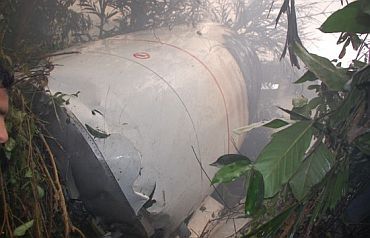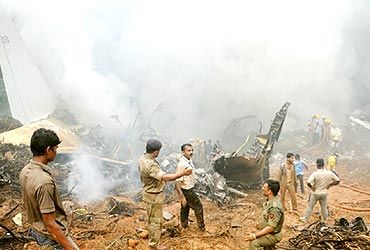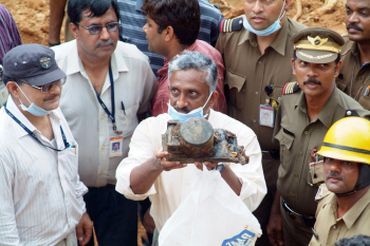
Disorientation and delayed response by the pilot -- who reportedly dozed off -- and ignoring his co-pilot's warnings during landing may have led to the Boeing aircrash in Mangalore that killed 158 persons, according to an inquiry report.
"Fatigue factor" could have led to the disorientation and delayed response, said official sources privy to the report, which is understood to have identified human error as a factor for the crash on May 22 this year.
The inquiry report is being examined by the Civil Aviation Ministry and would be made public soon, official sources said on Wednesday.
...

The six-member Court of Inquiry headed by retired Air Marshal B N Gokhale submitted its report to the Ministry on Tuesday.
The sources said the report is not likely to be tabled in Parliament in the immediate future but could be put up on the official website of the Ministry.
Though the probe is understood to have pointed out that Commander Captain Zlatko Glusica had not heeded to repeated warnings given by his co-pilot Capt H S Ahluwalia for taking 'a go-around' and not landing, the sources discounted reports about the Commander dozing off to sleep.
But, they said "fatigue factor" could have been one of the causes of his disorientation and delayed response.

As soon as the plane touched down, Ahluwalia is believed to have asked his Commander to pull all stops to take-off again immediately.
But the response was slow and the Boeing 737-800 aircraft departed from the paved surface of the runway and hit a localiser (radar) structure at the Runway End Safety Area.
The two-year old plane, which arrived from Dubai, then broke through the boundary fence on the side and plunged into a gorge catching fire. Both Glusica and Ahluwalia were among those killed.
The approach of the aircraft, while landing, was also understood to have been wrong in terms of height and angle, which led it to miss the 'landing threshold' area of the runway by almost 2,000 feet or 600 metres, they said.

Data retrieved from the cockpit voice recorder (CVR) of the ill-fated Boeing 737 aircraft had shown that the captain was on the wrong glide path and had delayed in taking corrective measures despite being requested by his co-pilot for "a go-around".
The probe panel is understood to have found that the commander had approached for landing at an angle more than three degrees, which is the standard procedure, the sources said, adding some anomalies were also found in his way of taking corrective measures that could have averted the accident.
The 2.05 minutes of CVR recording has indicated that despite being warned by the aircraft computers to 'pull up', the captain had not paid any heed. He also ignored the co-pilot telling him to go-around.
The last few seconds of the recording clearly says, "We don't have runway left" after which the CVR has recorded the loud crashing sound.